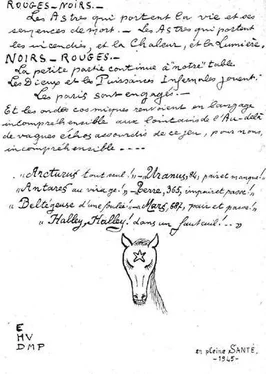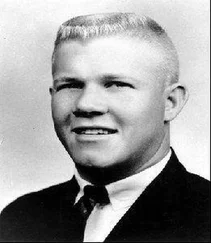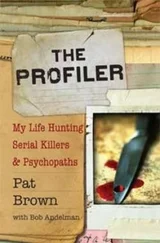7 His wife, Marie, feared Marie Lombard, Audition , March 27, 1944, APP, Série J, affaire Petiot, carton n° III.
8 But police soon learned Report, May 1, 1944, APP, Série J, affaire Petiot, carton n° I.
9 A number of invoices Report, May 6, 1944, APP, Série J, affaire Petiot, carton n° II.
10 The list of probable victims Report, May 10, 1944, APP, Série J, affaire Petiot, carton n° III.
11 “the most difficult and complicated” Stephen E. Ambrose, Eisenhower: Soldier and President (New York: Simon & Schuster, 1990), 142; Winston S. Churchill, The Second World War (New York: Bantam Books, 1962), Volume V, 499–512, 528–544.
12 He introduced himself Charles Rolland, Audition , June 24, 1944, APP, Série J, affaire Petiot, carton n° III.
13 It was in Marseille Ibid.
14 “He seemed in a” Ibid.
15 later criticized Massu discusses it briefly in L’enquête Petiot: La plus grande affaire criminelle du siècle (Paris: Librairie Arthème Fayard, 1959), 241–242.
16 “The Greatest Bluebeard” New York Times , July 26, 1944.
17 Three weeks later Washington Post , August 17, 1944.
CHAPTER 20. APOCALYPTIC WEEKS
1 “told me that” Georges Suard, Audition , October 9, 1944, APP, Série J, affaire Petiot, carton n° VI.
2 de Brinon would ever Count Fernand de Brinon, Audition , October 20, 1945, APP, Série J, affaire Petiot, carton n° VI, and again in the report of December 1945, in APP, Série J, affaire Petiot, carton n° VI. See also Le Pays , March 13, 1946, for another speculation about his intervention. Brinon passes over the spring of 1944 quickly in his Mémoires (Paris: La Page Internationale, 1949).
3 “vain flight” United Press, April 21, 1944; Le Petit Parisien , April 21, 1944; Le Cri du Peuple , April 24, 1944.
4 But Massu was not Jean-François Dominique makes this point well in L’affaire Petiot: médecin, marron, gestapiste, guillotinée pour au moins vingt-sept assassinats (Paris: Éditions Ramsay, 1980), 110. See also AN, 334 AP 65, 3368.
5 four thousand tons Omar N. Bradley, A Soldier’s Story (New York: Henry Holt and Company, 1951), 386–387.
6 “the key to France” Anthony Beevor and Artemis Cooper, Paris After the Liberation 1944–1949 (New York: Penguin Books, 2004), 36.
7 De Gaulle wanted Charles de Gaulle, The Complete War Memoirs of Charles de Gaulle (New York: Carroll & Graf Publishers Inc., 1998), 631–632.
8 “Paris must not” Larry Collins with Dominique Lapierre, Is Paris Burning? (New York: Pocket Books, Inc., 1966), unpaginated introduction; Samuel W. Mitcham Jr., Retreat to the Reich: The German Defeat in France, 1944 (Westport, CT: Praeger, 2000), 189.
9 The French police rebelled C. Angeli and P. Gillet, La police dans la politique (1944–1954)( Paris: Éditions Bernard Grasset, 1967), 57–74.
10 Under the leadership Marcel Le Clère describes the role of the guardians of peace in particular in Histoire de la police (Paris: Presses Universitaires de France, 1947), 124–125.
11 The pilot believed Gregor Dallas, 1945: The War That Never Ended (New Haven: Yale University Press, 2005), 179; Charles de Gaulle’s version, The Complete War Memoirs , 634–635.
12 “To this city” Collins, Is Paris Burning? , 30.
13 “sparkling torpedoes” Beevor and Cooper, Paris After the Liberation 1944–1949 , 34.
14 “purple-faced generals” Ibid.
15 “crossroads of death” Willis Thornton, The Liberation of Paris (New York: Harcourt, Brace & World, 1962), 167.
16 With forces estimated Beavor and Cooper, Paris After the Liberation 1944–1949 , 33.
17 Grand Palais Edmond Dubois, Paris sans lumière (Lausanne: Payot, 1946), 208.
18 “roped to the turret” Collins with Lapierre, Is Paris Burning? , 175.
19 “Tous Aux Barricades” Comité parisien de Libération, Albert Ouzoulias (Colonel André), Les Batillons de la jeunesse: le colonel Fabien et d’autres jeunes dans la résistance, dans les maquis et l’insurrection parisienne (Paris: Éditions Sociales, 1967), 439–440.
20 “What the hell, Brad” … “Is Paris burning?” Collins with Lapierre, Is Paris Burning? , 203, 220, 221, 302.
21 “olive drab jeeps” Flint Whitlock, The Rock of Anzio: From Sicily to Dachau: A History of the U.S. 45th Infantry Division (Boulder: Westview Press, 1998), 398.
22 “The greatness of man” … “The night of truth,” Combat , August 25, 1944, printed with a slightly different translation in Camus at Combat: Writing 1944–1947 . Jacqueline Lévi-Valensi Trans. Arthur Goldhammer (Princeton: Princeton University Press, 2006), 18.
23 “Paris,” he shouted Gregor Dallas, 1945 , 21; De Gaulle later described it as an “improvised reply,” The Complete War Memoirs of Charles de Gaulle , 649–650.
24 “I was drunk” Gilles Perrault and Pierre Azéma, Paris Under the Occupation (New York: The Vendome Press, 1989), 56.
25 “the loveliest, brightest” Collins and Lapierre, Is Paris Burning? , 322.
CHAPTER 21. “P.S. DESTROY ALL MY LETTERS”
1 “provisionally released” Réquisitoire définitif , December 31, 1945, APP, Série J, affaire Petiot, carton n° VII.
2 Massu, a firm believer Georges Massu, Aveux Quai des Orfèvres. Souvenirs du Commissaire Massu (Paris: La Tour Pointue, undated/1951), 151.
3 “I was almost arrested” … “P.S. Destroy” Marguerite Braunberger to juge d’instruction, September 6, 1944, printed in Jacques Perry and Jane Chabert, L’affaire Petiot (Paris: Gallimard, 1957), 62–63; AN 334, AP 65, 3378.
4 “ma chère amie” Ibid.
5 “Ma chère Maggi” Ibid; Marguerite Braunberger, Audition , December 4, 1944, APP, Série J, affaire Petiot, carton n° V.
6 “a baptism or first communion” Ibid.
7 “either a genius or a madman” Raymond Vallée, Audition , December 5, 1944, APP, Série J, affaire Petiot, carton n° V.
8 “I’m going to give” … anything else, other than Marguerite Braunberger, letter to juge d’instruction, September 6, 1944, and Report, December 11, 1944, APP, Série J, affaire Petiot, carton n° V. Marcel Braunberger confirmed receiving a letter as well. Marcel Braunberger, Audition , December 8, 1944, also in carton n° V.
9 she reported her husband’s disappearance Report, March 26, 1946, APP, Série J, affaire Petiot, carton n° III.
10 The case was closed Braunberger dossier, No. 95, 543 closed on January 9, 1943, APP, Série J, affaire Petiot, carton n° III.
CHAPTER 22. AT SAINT-MANDÉ-TOURELLE STATION
1 “The Mad Butcher” … “a swarthy, sinister-looking” United Press , August 31, 1944.
2 “He is only too real” Ibid.
3 “We have identified 54 victims” Ibid; Washington Post , November 3, 1944. The first part of this quote was also published by the New York Times , August 31, 1944.
4 a twenty-nine-year-old Italian woman Laetitia Toureaux is the subject of a fascinating new book by Gayle K. Brunelle and Annette Finley-Croswhite, Murder in the Métro: Laetitia Toureaux and the Cagoule in 1930s France (Baton Rouge: Louisiana State University Press, 2010).
Читать дальше












